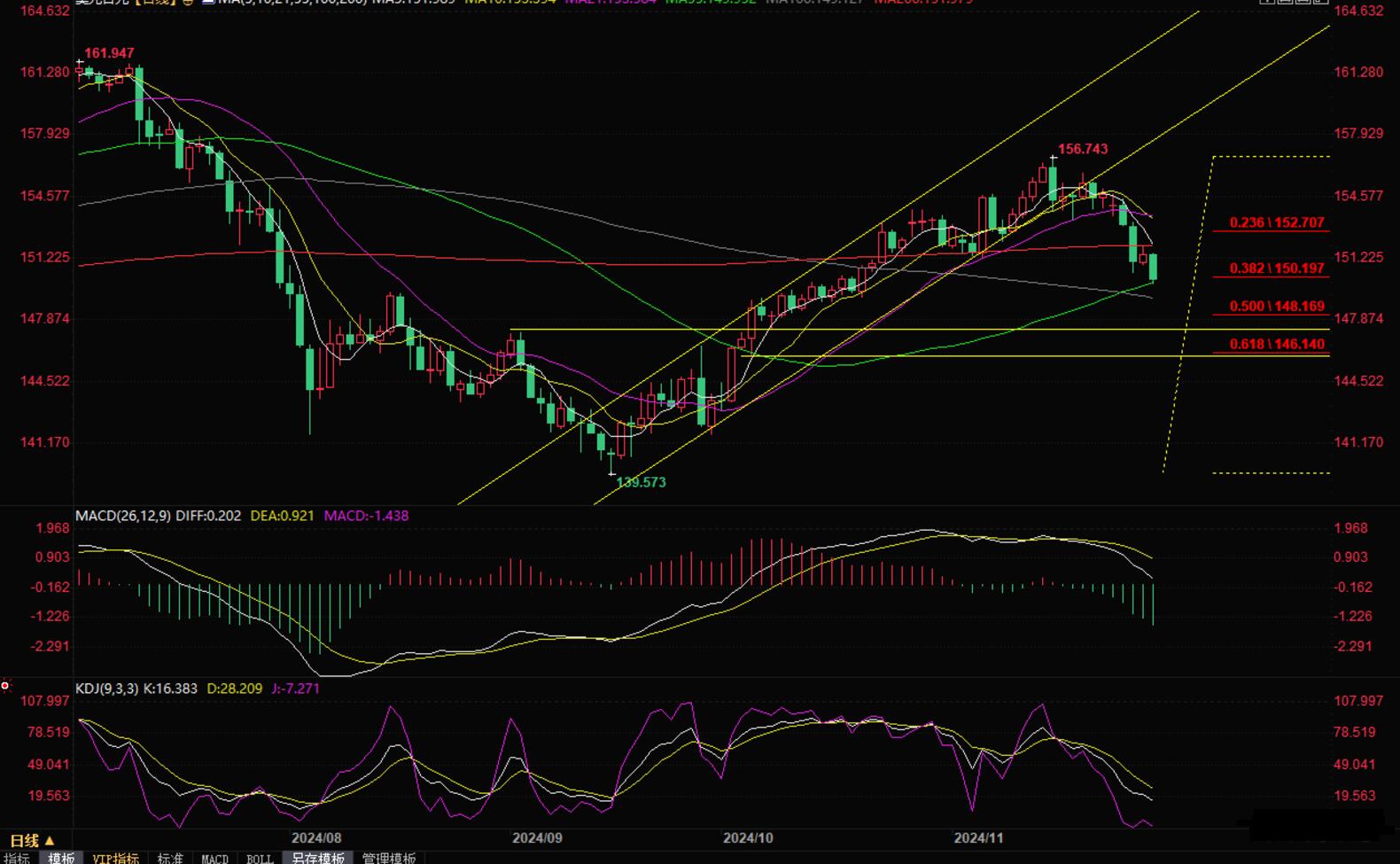Short term trend analysis of USD/JPY: The 150 level and 55 day moving average provide support, is there a bullish opportunity?
On Friday (November 29th), the USD/JPY continued to weaken, briefly falling below the 150 level to $149.84 per ounce. Currently, it has rebounded slightly to around $150.20, staying above the dual support levels of the 55 day moving average and the 150 integer level. The previous decline in the exchange rate was mainly due to stronger than expected core inflation data in Tokyo, Japan, and the rising geopolitical situation pushing up the demand for safe haven yen.
Fundamental factors
The core inflation in Tokyo, Japan accelerated in November, strengthening the prospect of the Bank of Japan raising interest rates; Excluding the volatile cost of fresh food, the Tokyo core CPI rose by 2.2% year-on-year in November, exceeding the median market expectation of 2.1% and accelerating from the 1.8% increase in October. The CPI, which excludes fresh food and energy prices and is closely monitored by the Bank of Japan, rose 1.9% year-on-year in November after a 1.8% increase in October.
Masato Koike, a senior economist at Sompo Institute Plus, said, "Not only are food prices rising, but prices in the service industry are also rising, which is good news for the Bank of Japan to achieve policy normalization
Bank of Japan Governor Kazuo Ueda stated last week that the Japanese economy is moving towards sustained wage driven inflation, so the possibility of another interest rate hike as early as December still exists. Just over half of the economists surveyed by Reuters expect the Bank of Japan to raise interest rates again at its meeting on December 18-19.
The volatile geopolitical situation provides safe haven support for the Japanese yen.
Russia's attack on Ukrainian energy facilities has caused power outages for millions of people, and Putin has stated that Russia may use new missiles to attack the "decision-making center" in Kiev.
Israel and Hezbollah accuse each other of violating the ceasefire agreement. The Israeli military stated that its air force attacked the facility used by Hezbollah in southern Lebanon to store medium range rockets on Thursday. Israel stated that on Thursday, it also opened fire on vehicles carrying "suspicious elements" that had arrived in multiple locations in the southern region. A Hezbollah lawmaker accused Israel of violating the agreement. According to the ceasefire terms, the Israeli army should withdraw from southern Lebanon within a maximum of 60 days, but neither side can launch any offensive actions. The Lebanese army subsequently accused Israel of repeatedly violating the ceasefire agreement on Wednesday and Thursday. The mutual accusations between the two sides highlight the fragility of the ceasefire
Technical aspect
The daily chart is currently supported by both the 55 day moving average and the 150 integer level, and the downward trend has slowed down. There seems to be a chance for the exchange rate to rebound in the short term.
But the MACD dead cross, KDJ dead cross, the exchange rate fell below the 200 day moving average and rebounded to confirm, and then continued to decline. The Bollinger Bands track initially opened, and MACD has a trend of crossing the zero axis. The central line of the exchange rate may continue to decline along the Bollinger Bands. The 100 day moving average support is around 149.13, the 50% retracement support is around 148.17, and the October 8th low support is around 147.34.
The upper resistance reached a low of 150.47 on November 27th; The 200 day moving average and 5-day resistance are around 152.00. If there is an unexpected strong rebound above this position, it will weaken the bearish signal in the future.

Resistance: 150.45; 150.92; 151.40; 152.00; 152.48;
Support: 149.84; 149.13; 148.17; 147.34;
Conclusion: Relatively speaking, although there are opportunities for volatile adjustments in the exchange rate at present, both the fundamentals and technical aspects are clearly biased towards bears, and short-term opportunities are clearly biased towards USD/JPY bears. Investors need to be wary of the possibility of the exchange rate effectively breaking through the 150 mark.
Tips:This page came from Internet, which is not standing for FXCUE opinions of this website.
Statement:Contact us if the content violates the law or your rights
